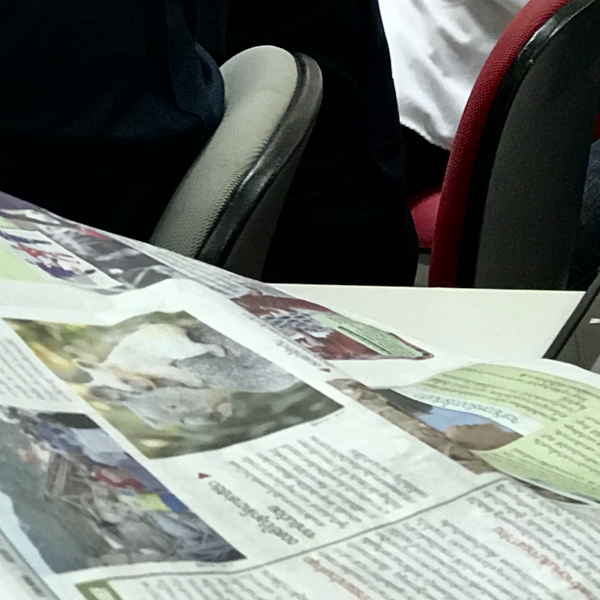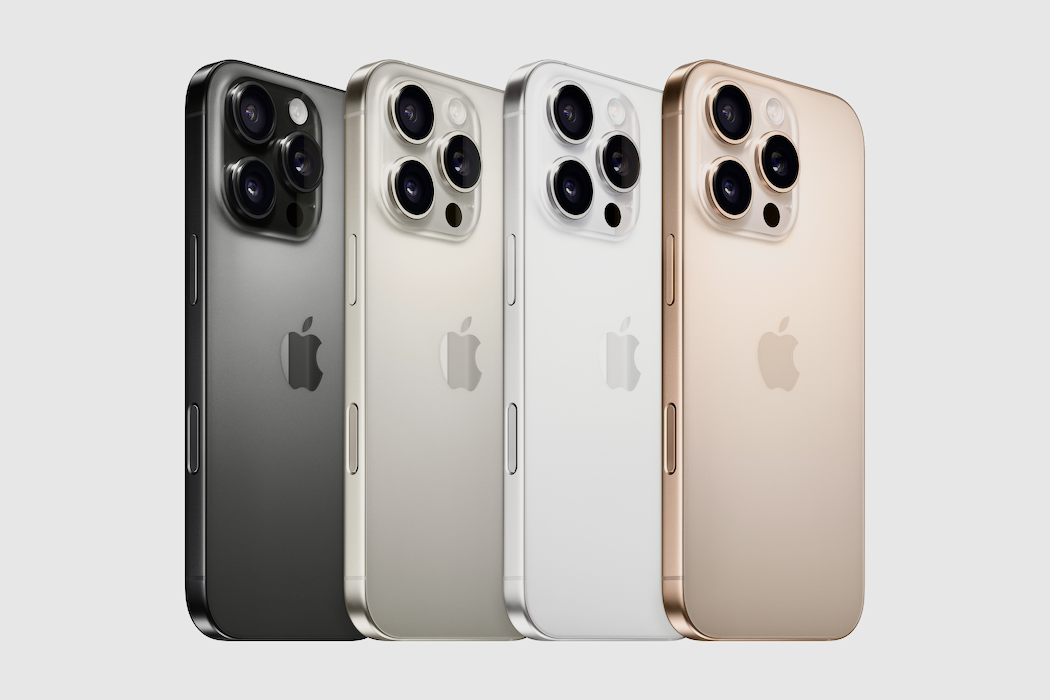
eXtensions - Sunday 29 September 2024
By Graham K. Rogers

Following the recent Cloudfarer débacle, Kasspersky remotely deleted software on users computers and replaced it with another app: not on Macs of course. With iMore following AnandTech (same parent company), a look at publishing: print and online. The approvals process for camera app, Halide, produced an Apple face-palm. Comments on the iPhone 16, particularly the camera.
As with any OS release, the recent iOS and iPadOS updates have seen problems including the bricking of some M4 iPad Pro devices: mercifully, I did not experience this. Some bugs reported are "touchscreen issues affecting the iPhone 16 series and some older models, an iMessage bug where a shared Apple Watch face can cause the app to repeatedly crash" and the bricked iPad Pro reports. It is no surprise, therefore, to read the report by Joe Rossignol (MacRumors) that tells us an 18.0.1 update is on the way: maybe next week. Later we can look forward to iOS 18.1 which will have several new features.
 One of the reasons that it has always been so hard for attackers to install applications on the Mac is that there is no Root access - Root has no password. Admin has access to most of the OS, but for some special actions, an Admin account (and only the Admin) has to use the sudo command, which requires the Admin password. Recently Kaspersky, the Russian security company that is no longer trusted by authorities in the USA, as part of its withdrawal from the US market, remotely deleted its software from several Windows machines and then installed UltraAV with no user interaction. Mac users (as well as iOS And Android) were sent email and had to do the update themselves.
One of the reasons that it has always been so hard for attackers to install applications on the Mac is that there is no Root access - Root has no password. Admin has access to most of the OS, but for some special actions, an Admin account (and only the Admin) has to use the sudo command, which requires the Admin password. Recently Kaspersky, the Russian security company that is no longer trusted by authorities in the USA, as part of its withdrawal from the US market, remotely deleted its software from several Windows machines and then installed UltraAV with no user interaction. Mac users (as well as iOS And Android) were sent email and had to do the update themselves.
This action sort of confirms why Kaspersky was being blocked in the USA, but the ability to do this sort of thing is part of the reason that Cloudfarer was able to update and crash many systems worldwide recently. "Rob Joyce, the former director of cybersecurity at the National Security Agency, wrote in a series of posts on Xthat this automatic migration showed why granting Kaspersky software trusted access to anyone's computer was a 'huge risk'" (Lorenzo Franceschi-Bicchierai, TechCrunch).
 A movie that helped me realize that print media was dead was a 2013 documentary, Black and White and Dead All Over. Like many print publications that followed it, despite talented writers, photographers and a collection of Pulitzer Prizes, the publishers could not save the Philadelphia Daily News. One by one I have watched other print publications try to ward off the inevitable, shrink and die. Even when a web version of the title publication is available, some newspapers are unable to adapt to the new medium. With the arrival of new players who do understand how online media work, the old guard never really understood why their publications, lost readership, withered and died.
A movie that helped me realize that print media was dead was a 2013 documentary, Black and White and Dead All Over. Like many print publications that followed it, despite talented writers, photographers and a collection of Pulitzer Prizes, the publishers could not save the Philadelphia Daily News. One by one I have watched other print publications try to ward off the inevitable, shrink and die. Even when a web version of the title publication is available, some newspapers are unable to adapt to the new medium. With the arrival of new players who do understand how online media work, the old guard never really understood why their publications, lost readership, withered and died.
Now, with changes in accessibility and the loss of much advertising revenue, online publications are also feeling the cold, hard blade of economics. Not so long ago I was saddened to read of the closing down of the valuable technical publication, AnandTech. This week sees another blow with the announcement that the well-known publication, iMore is to close and Gerard Lynch on TidBits adds the point that, "like AnandTech, iMore was owned by publication aggregator Future PLC". Further to that, Joe Rossignol (MacRumors) reports, 'In a financial disclosure today, the company announced that it is closing a "number of non-core or low to no growth assets,' including a 'small number of print and digital brands.'" I find that disdainful.
iMore had always been a good source of information, particularly in its early days under Rene Ritchie who is now at YouTube (Creator Liaison). It was always a good (but not the only source) for information on technical subjects, but now it has gone, "a keen reminder that the world of technology never stands still" (Stephen Hackett, 512 Pixels). Like AnandTech, the archive will remain. Joe Rossignol's report included a respectful comment at the end: "From one Apple blog to another, we wish the iMore team past and present all the best." Ditto. It was good to learn from these writers.

As the iPhone 16 has begun to reach buyers, the tech press have begun to produce articles on the new devices. In an article that is well-worth reading, D. Griffin Jones (Cult of Mac) has a useful hands on look at the new iPhone 16 Pro which, the article notes, was not a review model from Apple. He makes some pragmatic comments on what Apple has done with some occasional enthusiasm, but is critical where this is due.
He begins one comment, "While the phones look quite similar" . . . and this is where a lot of pundits will sometimes stop. However, he continues, "Apple's classic incremental change makes the 2024 model quite a step up". He details the changes in 9 separate sections, plus a 10th for the pricing. He notes, as a somewhat-euphoric iFixit have already mentioned, that this is the most repairable iPhone ever, with the iFixit video of the battery removal process (from 2:36) a testament to the design thinking, materials choice and engineering that goes into this handheld device. The design and engineering aspects becomes even clearer as the teardown is taking place.
The article mentions Cleanup. I am still unsure if this is part of Photos (which seems more likely) or a separate app. This sounds like more than the basic repair tool that I wrote last time is still missing from Photos editing tools. This new feature is not simply the repair tool that I want to clean up dust specks on my scanned negatives, but a feature for removing large, unwanted parts of an image. I already have the Retouch app (iOS and Mac) for removing artifacts like power lines or similar annoyances in an image, but this removes people. If pictures are destined for social media, this will do fine, and I am quite happy when people stray into a street scene image, although I may sometimes take a second photograph (or more) to make sure.

|

|
There is an interesting comment on wind noise: "Audio quality doesn't make headlines, but these are both great improvements that will upgrade all of your videos from now on." That feature will also help when making phone calls outdoors, so there has clearly been some good work on the iPhone under the hood: improvements that do not make headlines, but add to the user experience. Although some of the features he examined are only available through the beta releases currently, he looks at what is possible in a practical way. Like me, he is unlikely to use the writing tools - I make it up as I go long - but there are some features like proofreading or reformatting (he mentions that text can be changed to a bulleted list) that might be useful. As I do a lot of editing I will be interested to see how the proofreading feature works out.
 One of the better photo apps for the iPhone is Halide. I have used information from one of the developers, Sebastian De With, when writing about RAW photos as his knowledge is valuable. The app was recently featured in the Apple event, so Cupertino knows who the developers are. Someone in the App Store rejected an update to the app as the description of what the app does, although unchanged from before, was deemed to be insufficient.
One of the better photo apps for the iPhone is Halide. I have used information from one of the developers, Sebastian De With, when writing about RAW photos as his knowledge is valuable. The app was recently featured in the Apple event, so Cupertino knows who the developers are. Someone in the App Store rejected an update to the app as the description of what the app does, although unchanged from before, was deemed to be insufficient.
Ben Lovejoy (9to5Mac) explains that to take photographs, access to the camera is needed and this needs to be justified by the developer who wrote, "The camera will be used to take photographs"". Rejection. Lovejoy's article is headed by the news that a phone call from Apple told the developer that the rejection had been rejected, but the news was out by then and has since been covered widely. I am sure someone in Apple's upper management had a WTF moment and picked up the internal phone. Apple will of course not discuss what action, if any, was taken regarding personnel.
Following a recent YouTube report that the iPhone 16 does not take 48MP images and that this [the claim by Apple] is fake, Jeremy Gray (Petapixel) analyses the comments (and the images), explaining in some detail how modern imaging technology works. The article also draws on the opinions of Sebastian de With (see above). Gray and de With suggest that the "Fake" claim is dubious. And the iPhones do take awesome images (Gray).
Around the same time Austin Mann put out a practical look at the new iPhone camera and video potential on a recent shoot in Kenya. The opening video sequence at the top of the page proves the value of the new iPhone 16 and clearly shows that this is not merely an incremental update as many lazy writers are claiming. The report looks at all of the iPhone 16 camera capabilities, from macro and telephoto, through to HiRes Pro videos at 120fps (recorded to an external disk). There were several other images in-between and he comments on the quality output of the 48MP cameras. During the shoot, Mann logged over 10,000 photos and 3TB of ProRes footage, giving a shout out to Halide and Kino, both of which I use, among others.

He is fairly enthusiastic about the new Camera Control button, but does note that on occasions, such as in the helicopter, there was spurious input and the pressure of his finger made some unwanted changes. A look around showed that in Accessibility settings this could be adjusted. Overall, he is enthusiastic about this new feature, but there may be some learning involved. It can be disabled if necessary. He is also positive about audio with the iPhone 16, particularly regarding wind noise, reducing the need for additional microphones. While many users may not notice notice some of the features - I was frantically changing settings I had missed on my iPhone 15 Pro while the video was running - these are particularly useful for high end users and Mann is looking forward to the advances Apple Intelligence will bring later this year.
As an example of the high end abilities of the iPhone, cast your minds back a few years to 28 Days Later, starring a young Cillian Murphy. This was a landmark movie, not the least for the use of the handheld Canon XL-1 camcorder to film it. Fast forward to the "Scary Fast" Apple Event last year, which surprised many people when they saw at the end that it was all filmed on the iPhone 15 Pro. Danny Boyle who made 28 Days After has now competed 28 Years After and this was all filmed on the iPhone 15 Pro Max showing just how far the technology has come and allowing ordinary users to produce higher quality output from the phone in the pocket (Malcolm Owen, AppleInsider). And the iPhone 16 camera is improved.
Graham K. Rogers teaches at the Faculty of Engineering, Mahidol University in Thailand. He wrote in the Bangkok Post, Database supplement on IT subjects. For the last seven years of Database he wrote a column on Apple and Macs. After 3 years writing a column in the Life supplement, he is now no longer associated with the Bangkok Post. He can be followed on X (@extensions_th). The RSS feed for the articles is http://www.extensions.in.th/ext_link.xml - copy and paste into your feed reader.

For further information, e-mail to
Back to
eXtensions
Back to
Home Page